TL;DR
Staging bedrooms for sale doesn’t require a big budget—just crisp paint, thoughtful bed placement, and layered, neutral bedding. Use one cohesive paint color, show scale with nightstands and lamps, and repeat a simple accent across rooms. If you list later, consider virtual staging for real estate listings to upgrade your visuals without renting furniture.
Staging bedrooms buyers actually feel
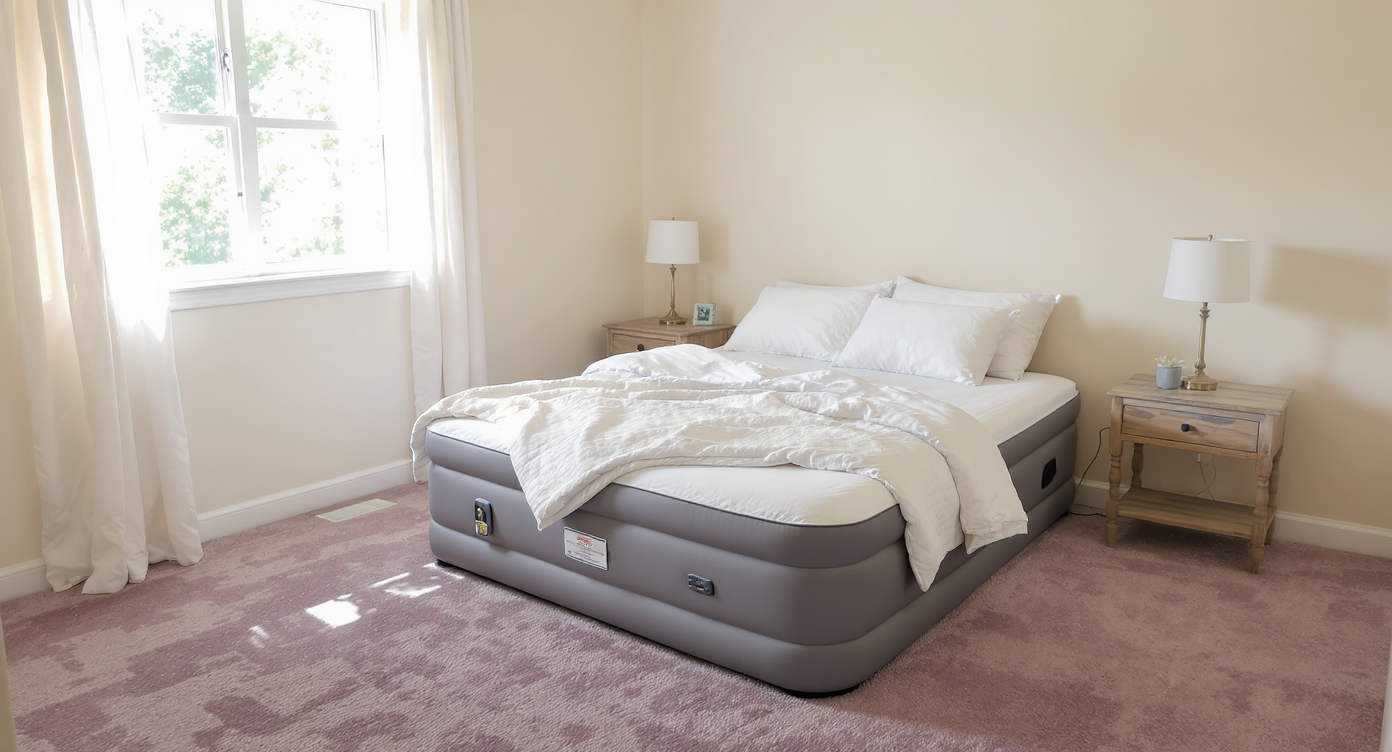
Fresh paint and smart bed placement transform a modest bedroom into an inviting, buyer-friendly space.
SEO intro (140 characters): Bedroom staging on a budget: paint, bed placement, and neutral layers that make buyers linger online and in person.
In today’s scroll-speed housing market, bedroom staging is about clarity and comfort. Buyers decide in seconds. Agents often advise that clean paint, inviting bedding, and a believable furniture layout do more than accessories ever could. In recent staging profiles from industry groups, living rooms rank most important, with the primary bedroom close behind, because these spaces anchor emotion and function for buyers.
Here’s the thing: most sellers don’t have endless funds, matching furniture, or perfect carpet. You might have a queen air mattress, a pair of vintage nightstands, and a carpet that reads taupe with a purple undertone. That’s real life. The good news? A cohesive plan—neutral paint, smart bed placement, and inexpensive layered bedding—can make three very different bedrooms feel like one story.
(Alt text idea for listing photo: airy primary bedroom with soft white walls, white bedding on beige carpet, round black-framed mirror reflecting garden light.)
The core strategy that works on any budget
The core strategy that works on any budget
“Show scale, show light, and keep the story consistent from room to room,” agents often advise.
- 1) Pick one staging paint color and commit. Neutral off-whites with warm undertones help beige or pinky‑taupe carpet read intentional. Try samples of Sherwin-Williams Alabaster, Benjamin Moore White Dove, or BM Cloud White and watch them morning to evening. Market analysts suggest consistent paint improves perceived cohesion; even a quick DIY repaint can influence offer confidence.
- 2) Place the bed where buyers expect it. As a rule, set the headboard on the strongest wall you see upon entry and leave 24–36 inches of walkway on each side. Stagers note that buyers chronically underestimate what fits; seeing a full/queen with nightstands communicates scale instantly. If the door swing is tight, center the bed on the wall opposite the entry or the longest uninterrupted wall.
- 3) Layer neutral bedding for volume, not pattern. Listings with crisp, textured bedding tend to garner more clicks; many photographers estimate a 30–50% lift versus flat, wrinkled quilts. Use a king comforter on a full/double for generous drape, a wraparound bed skirt to hide frames, and two 26-inch Euro pillows to fake a headboard. Keep palettes simple: white + one muted accent (soft blue, olive, or clay).
- 4) Show nightstands and lamps to anchor the bed. For a full/queen, use nightstands 18–24 inches wide and 24–28 inches high; lamps around 26–28 inches tall keep proportions right. Pairs signal balance. Thrift or big-box finds often land under $60–$80 for two lamps when you shop markdowns.
- 5) Add one reflector and one green moment. A 28–36 inch round mirror over a dresser bounces light and visually widens the room. A single leafy branch or low-maintenance faux stem reads fresh without clutter.
Budget snapshot (DIY, per bedroom): bedding $75–$150, bed skirt $12–$30, two lamps $60–$80, mirror $40–$60, greenery $15–$25. Total: roughly $200–$345. Sellers who keep to neutrals reuse items across rooms to stretch dollars.
(Caption idea: “Simple works: white duvet, Euro shams, tailored bed skirt, and twin lamps make a full bed feel like a destination.”)
Anecdote
A seller fretted over a long bedroom wall and tiny art. Instead of forcing the piece, they left the wall calm, added a generous mirror over the dresser, and used a pair of lamps to fill vertical space. The room finally felt balanced—and the art moved to the hallway, where its smaller scale looked intentional.
Common mistakes that make rooms feel “sad”
Common mistakes that make rooms feel “sad”
“Sparsely furnished looks sad; selectively furnished looks intentional,” stagers like to say.
- Underscaled nightstands. Tiny tables (under ~14 inches wide) make the bed look bigger and the room look smaller. Upgrade to 18–24 inches wide or use a slim chair as a stand if space is tight.
- Misleading or over-edited visuals. Virtual staging is powerful for marketing, but experts recommend keeping photos realistic enough that buyers recognize the rooms at showings.
- Fighting undertones. Cool grays often read purple against taupe carpet. Choose warm off-whites or very light greiges with balanced undertones.
- Flat, wrinkled beds. A comforter fluffed in the dryer and folded in thirds at the foot adds depth fast. Layer a textured coverlet for structure.
- Musty borrowed pieces. If it smells or shows mold, it goes. Odors undermine perceived maintenance—buyers conflate scent with condition within seconds.
Pro tips from agents, stagers, and photographers
Pro tips from agents, stagers, and photographers
“Stage for the screen first—most listing views happen on phones,” agents often note.
- Light temperature matters. Use 3000–3500K LED bulbs and match color temperatures across lamps and overheads. Photographers report more natural skin tones and textiles at these levels.
- Mirror math. A round mirror should be roughly two-thirds the width of the dresser, with the bottom 6–8 inches above the top surface.
- Art scale guideline. Over the bed, art typically works best at 50–75% of bed width. If your piece is too small, group two or keep the wall calm.
- Paint sheen for staging. Eggshell on walls hides minor imperfections; satin or semi-gloss on trim and doors brightens edges buyers notice.
- One thread through all rooms. Repeat a subtle element—a black frame, a soft stripe, or a light blue throw—so the upstairs and main-floor bedrooms feel related.
- Declutter the edges. Clear floors, open sightlines from the door, and leave 2 feet of floor showing on each side of the bed when possible to make rooms read larger.
Real stories: small moves, big results
Real stories: small moves, big results
“The bed across from the door changed everything,” a listing agent told me about a tricky upstairs room. They centered a full bed on the long wall opposite the entry, kept 30 inches at the foot for door clearance, then added one substantial nightstand and a lamp. The room stopped reading “too small.”
A seller with beige carpet and an air mattress on paint cans went with BM White Dove on the main-floor bedroom, hung a 30-inch round black mirror over a modest dresser, and used two Euro pillows to fake a headboard under existing sconces. The mirror reflected a leafy view, and the room finally felt intentional.
Another homeowner hauled in vintage nightstands from storage, only to find mustiness and small bugs. They cut losses, sourced a clean, $70 pair of lamps and a $55 mirror locally, and layered a king-size white comforter over a full bed. The result felt fresh, not fussy—proof that editing beats forcing pieces that don’t pass the sniff test.
And yes, I’ve seen sellers spend six hours chasing perfect bedding. The sets that photograph best are usually simple: a textured white coverlet, a fluffed duvet folded at the foot, two sleeping pillows plus two Euros, and one small accent pillow in a color repeated elsewhere. Done.
Visualization Scenario
A buyer steps into the main-floor bedroom. The bed sits squarely on the sconce wall, layered in white with two Euro pillows and a folded duvet. A round mirror catches the window’s greenery, doubling the light. On the nightstands, twin lamps glow at 3000K. Nothing shouts for attention, but everything confirms this room works.
FAQ
FAQ
- What paint color is best for home staging a bedroom and the best white paint for selling a house?
Choose a warm off-white like SW Alabaster or BM White Dove to complement beige or pinky‑taupe carpet. Test large swatches at different times of day to avoid gray paints that can flash purple against taupe. - How do I stage a small bedroom on a budget and staging a small bedroom for sale?
Center the bed on the strongest wall, use a king comforter on a full for generous drape, add a wraparound bed skirt, and show at least one nightstand with a 26–28 inch lamp. Keep bedding white and add one repeated accent color for cohesion. - Should I use virtual staging or real photos for virtual staging for real estate listings?
Use virtual staging to market online affordably, but keep the look realistic and align in-person rooms with what buyers saw. Many agents pair light DIY staging on-site with virtually enhanced photos for maximum impact. - What size nightstand height and bedside lamp size for staging should I choose?
Aim for nightstands 24–28 inches high and 18–24 inches wide beside a full/queen; lamps around 26–28 inches tall balance the headboard line. Pairs create symmetry that reads as calm and upscale. - How much does home staging cost and a DIY staging budget for bedrooms?
DIY bedroom staging typically runs $150–$400 per room for paint and soft goods; full professional staging can range from several hundred per room to $4,000–$6,000 for a whole vacant home, depending on market and duration.
(Alt text idea for FAQ graphic: side-by-side of “too small table” vs. appropriately scaled nightstand with lamp.)
Think like an editor, not a decorator
Think like an editor, not a decorator
Bedrooms don’t need to be magazine-perfect to sell; they need to be believable, bright, and proportional. Keep paint consistent, place the bed where it proves the room works, layer neutral bedding, and add just enough light and reflection to help buyers breathe. Treat each room like a chapter in the same story, and the house starts to feel inevitable.
Considering a full MLS push later? Test ideas now with virtual options. Tools like ReimagineHome can mock up paint, bedding, and furniture styles in minutes so you can preview a cohesive look before you spend.
.svg)

.svg)

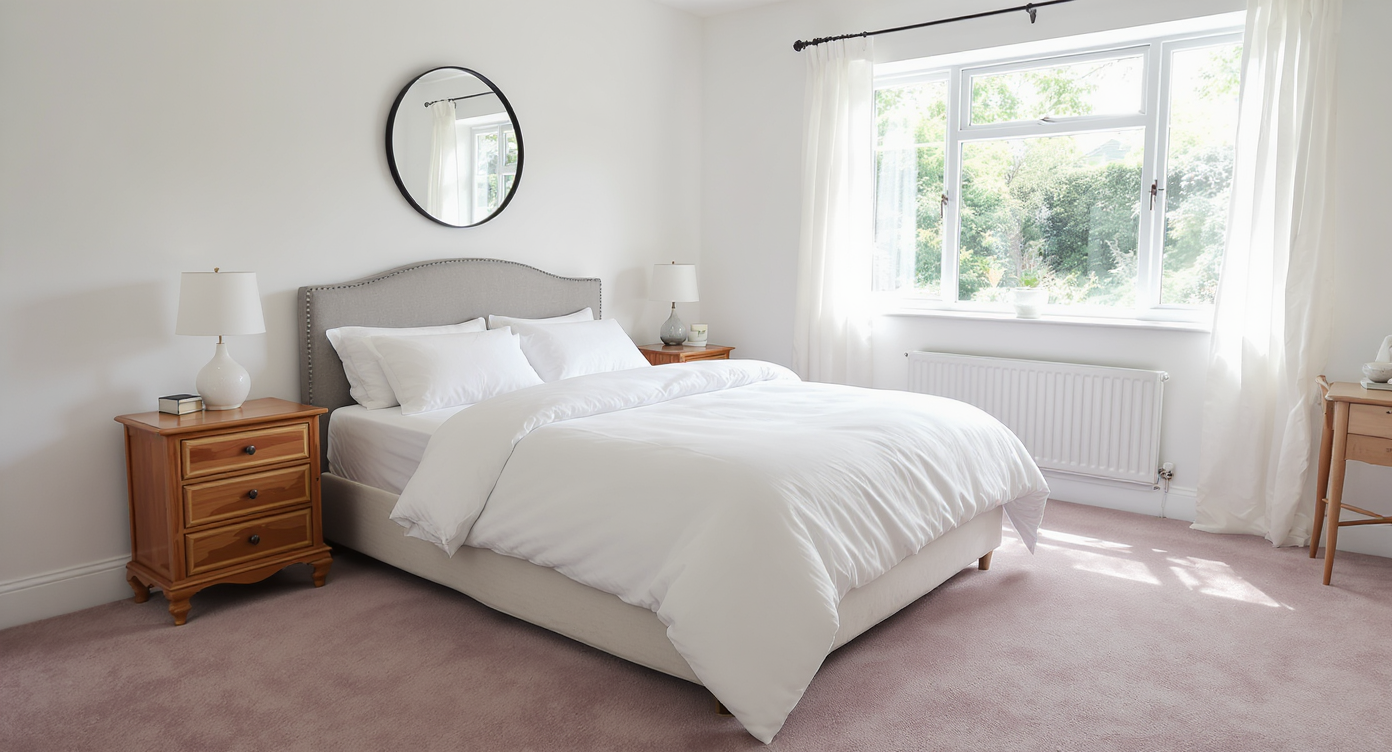
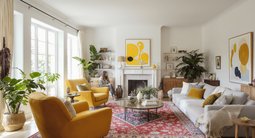

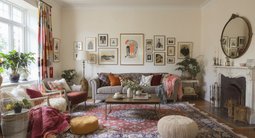
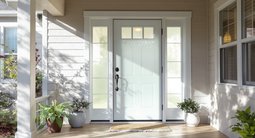

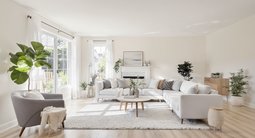

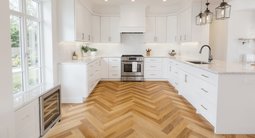
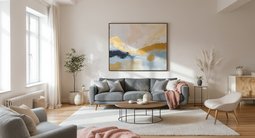
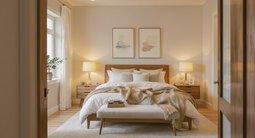


.png)